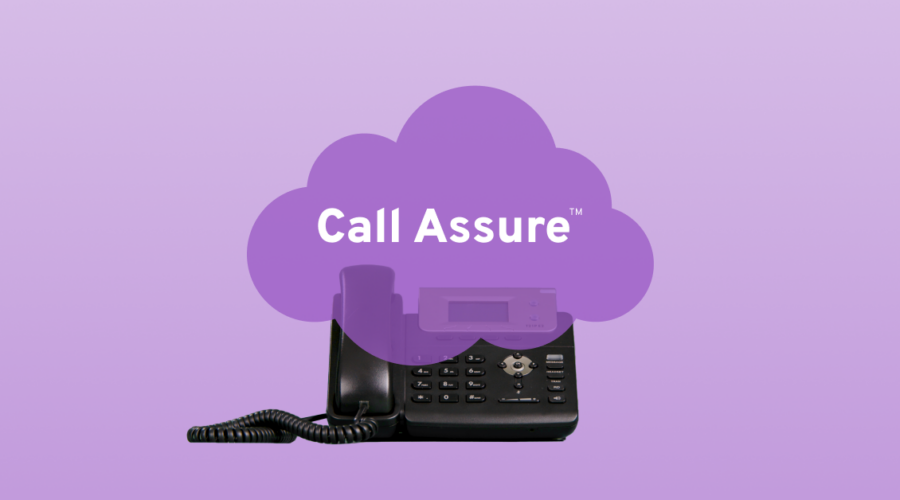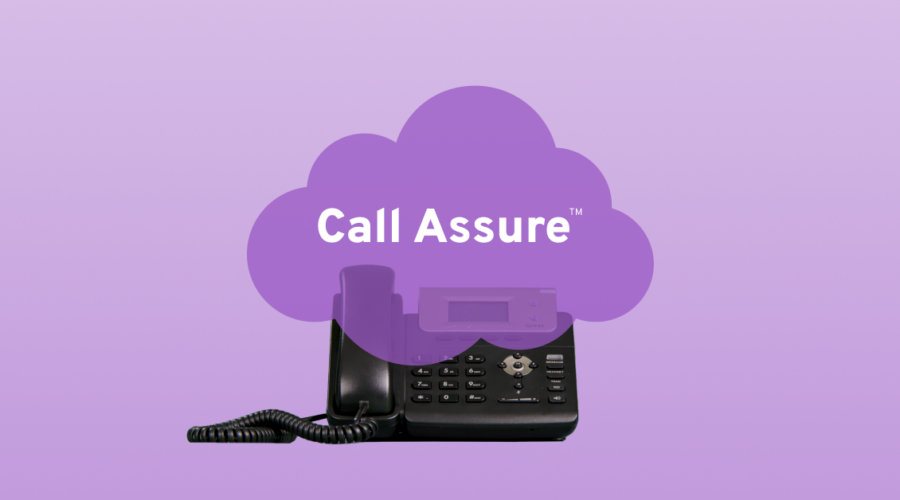Hidden Cost #1: Upfront costs of becoming your own RespOrg
Becoming your own RespOrg and taking control of your toll-free will certainly eliminate costs for your business—no markups and management costs on toll-free numbers from a third party. But, the costs associated with becoming a RespOrg before you can buy that first number directly from Somos can quickly add up if you’re unprepared for them.
Become Somos certified: $5,750
Before you can manage your toll-free traffic, you have to be certified by Somos, the organization tasked with managing numbers under the North American Numbering Plan (NANP) and the Service Management System Database for Responsible Organizations (RespOrgs).
This process requires you to:
- Pay a deposit of $4,000 to Somos (refunded after one year of prompt payments)
- Complete a 7-step service establishment form
- Study for, take, and pass the RespOrg exam ($1,750 per person for their 5-day training class)
All of that effort results in just one person in your organization being certified, and your business receiving its own RespOrg ID, gaining access to the SMS/800 Toll-Free Number (TFN) Registry.
Hire & equip an employee to manage your toll-free: +$77k/annually
Registering for your RespOrg ID is only cracking the door open for your organization to manage your own toll-free service. Next up, you’ll need someone with toll-free routing expertise to manage your toll-free service on a day-to-day basis. A full-time employee with the necessary qualifications will conservatively cost you:
- Between $77-$80k per year in salary and benefits for a Toll-free Administrator
- Overtime and/or lost revenue for when this employees in on vacation: $300+ per day (multiplied accordingly)
- Additional certifications and opportunity cost from turnover: $1,750 per new staff member training course.
To help unpack those last two bullets, if you only have one person managing your toll-free routing, when they’re on vacation, your toll-free routing is on vacation. That means that if a local market impairment (or network outage) happens while this person is out of office, they’ll either have to work anyway, or you’ll have to incur the costs of an outage until they get back. If you’ve planned for redundancy at the staff level, you’ll need to multiply salaries, benefits, and management budgets to account for your team of people.
Purchase and pre-provision TFNs for real-time customer orders: $0.1234 x Total TFN Inventory
Acting as your own RespOrg means ordering and provisioning your own toll-free numbers. If you or your customers need real-time access to toll-free numbers, this can mean:
- Purchasing and pre-provisioning toll-free numbers with the toll-free carriers in order to have inventory that can fulfill your customer orders
- Incurring costs without any ROI to hold onto numbers you’re not actively using
- Handling the consequences of hoarding inactive toll-free numbers (which is illegal)
Operating as your own RespOrg can lead to cost savings on toll-free numbers. But, the cost of becoming a RespOrg, combined with inventory costs and personnel costs, can quickly add up, even if you are operating at maximum efficiency. And any blind spots in your toll-free setup can quickly lead to frequent incidents and inefficient routing that ends up disrupting your day-to-day operations and costing your business more money than you’ve saved.
Hidden Cost #2: Complex LCR & monitoring tools
You’ve acquired access to the SMS/800 TFN registry, and now you’re ready to order toll-free numbers directly, all while saving heaps of money on your toll-free costs—right? Hold that thought.
Let’s talk about efficiency challenges on the back-end of managing your toll-free.
3rd Party Management Tools: $10k+ per month (and $25k+ NRC)
As your own RespOrg you’ll quickly see the need for advanced routing and Network Operations Center (NOC) alarming tools. These tools ensure you’re quickly notified of any downstream service issues and allow you to resolve outages both big and small, including those down at the local market level.
There are various 3rd party tools and services out there that can equip you with the data, machine learning, and insightful tools that will assist your monitoring & issue resolution—but they all come with hefty price tags. A few tools in most successful RespOrgs’ toolkits are:
- Network performance monitoring & diagnostics
- Traffic testing automation
- Toll-free provisioning
- Complex LCR
- Vendor invoice auditing
- Template management (reroutes on outages)
- Margin reporting
RespOrg-as-a-Service Platforms: $$$ – Varies based on contract
If you want to manage your own toll-free, but aren’t committed to actually becoming a RespOrg yourself, you might consider using a RespOrg-as-a-Service platform. This option can equip you with access to routing, disaster recovery, and number management tools to help you find a middle ground between becoming a RespOrg and completely relying on a service provider to be your RespOrg.
However, you’ll need to consider the limitations that come with “carrier agnostic” RespOrg platforms like these, which can mean low or no visibility into the PSTN when downstream issues arise. Their lack of PSTN insight and capacity to troubleshoot deep into the carrier networks can translate into frustrated customers on both ends of the phone.
On-staff Talent & Expertise: +$77k & 24/7 Coverage
RespOrg-as-a-Service platforms come with tools to help you streamline routine processes associated with managing your own RespOrg. What’s missing is the in-house expertise required to make the most out of those tools—leaving the management responsibility of your toll-free to fall entirely on your business.
While this may not require the sole attention of a full-time employee, it will require that someone be dedicated to managing toll-free as a part of their responsibilities. The costs and vacation-limitations listed above for a dedicated hire apply here, too.
At the end of the day, these tools help you manage your traffic & toll-free numbers more efficiently while decreasing time to first response, but the responsibility still remains on you. And if you can’t fix it fast—your customers will notice (and they’ll find someone else for their business-critical toll-free).
Saving money with direct toll-free numbers from Somos and “gaining control” sounds great in theory, but once you consider the back-end costs, which can easily take you three steps backward in your pursuit of growth and higher margins, you might want to reconsider.
Hidden Cost #3: Call Volumes, Rates, & Redundancy
The whole point of becoming your own RespOrg is to have control over your toll-free management and get the cost-savings that you associate with that control. It’s easy to get too focused on the up-front cost savings, like paying less per toll-free number by cutting out the middleman. But even more important than TFN rates, you have to consider your volume of toll-free minutes of use (MOUs) and the negotiating power (or lack thereof) you’ll have with carriers.
- Even though you may be your own RespOrg, you’re still using the major toll-free carriers to route your traffic. If you have limited traffic volumes, or are trying to maintain redundant paths, you’ll likely pay a much higher price per MOU to these carriers.
- Redundancy has real implications on the costs associated with maintaining redundant interconnections. You have to fund, maintain, and monitor each individual connection to a toll-free carrier, which can get pricey fast.
- Forecasting business financials can be difficult when you are using variable rates across complex rate decks among multiple carriers. That can lead to paying an amount one month, and having sticker shock on the following month’s bill.
Saving money with direct toll-free numbers from Somos and “gaining control” sounds great in theory, but once you consider the back-end costs, which can easily take you three steps backward in your pursuit of growth and higher margins, you might want to reconsider.
Avoid the hidden costs & work directly with a carrier
In order to bypass these hidden costs in a smart way, you have to work with a provider that has the right blend of RespOrg expertise, automated tools, and their own Feature Group D network, as well as dedicated, experienced personnel.
By using a carrier as your RespOrg you’ll get access to a team of experts (so no single point of failure) that constantly monitor and manage your toll-free traffic, often making subtle adjustments behind the scenes to ensure you and your customers avoid outages. You’ll want to make sure your carrier has a 24/7 Network Operations Center (NOC) so they can spot and proactively route around local market impairments to minimize downtime. This will make sure your calls and revenue continue to flow, and that your team is freed up to focus on other tasks.
Better pricing options
You’re already searching for cost savings, but you shouldn’t have to trade quality and redundancy for a lower invoice. Make sure that whoever is managing your RespOrg passes along the financial benefits of network ownership. You’ll also want to make sure that quality and redundancy are both part of the equation too, so make sure your network provider is multi-threaded with other toll-free networks to minimize downtime.
Working with a carrier that has all of this will result in competitively low pricing without the hassle and operating expenses required to become and maintain your ownRespOrg.
Focus on revenue
By eliminating the costs associated with becoming a RespOrg, or using a RespOrg-as-a-Service platform, you’ll be able to pivot your team onto other revenue-generating tasks for your business. Whether that’s growing your existing business or launching new features, your team can focus on what makes your business great, and not on managing your toll-free routes.
A comprehensive source for your voice strategy
Utilizing a carrier as your RespOrg gives you a single source for your voice needs. This strategy allows you to work with a single provider for your toll-free traffic, toll-free number management, and a slew of other modern voice services—and you won’t have to translate multiple support channels, varying API structures, or complicated bills to make it all work together. Instead of having to manage toll-free on your own, you gain the support of a team of experts that can save you time and money.
Gain confidence by working with a Tier 1 carrier
Work with Bandwidth to ensuring you have reliable toll-free traffic without a single point of failure—all so you can focus on what your business does best, and not have to worry about Steve taking his well-deserved and much-needed vacation.
Related posts
Blog
Contact Center
Toll-Free
Unified Communications
Blog
Contact Center
Toll-Free
Webinar
Regulations
Toll-Free
Voice






